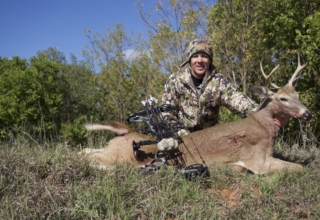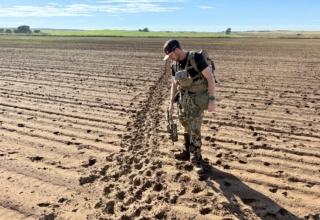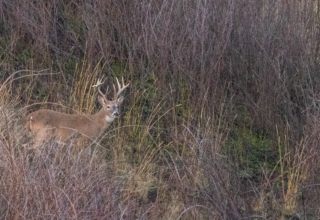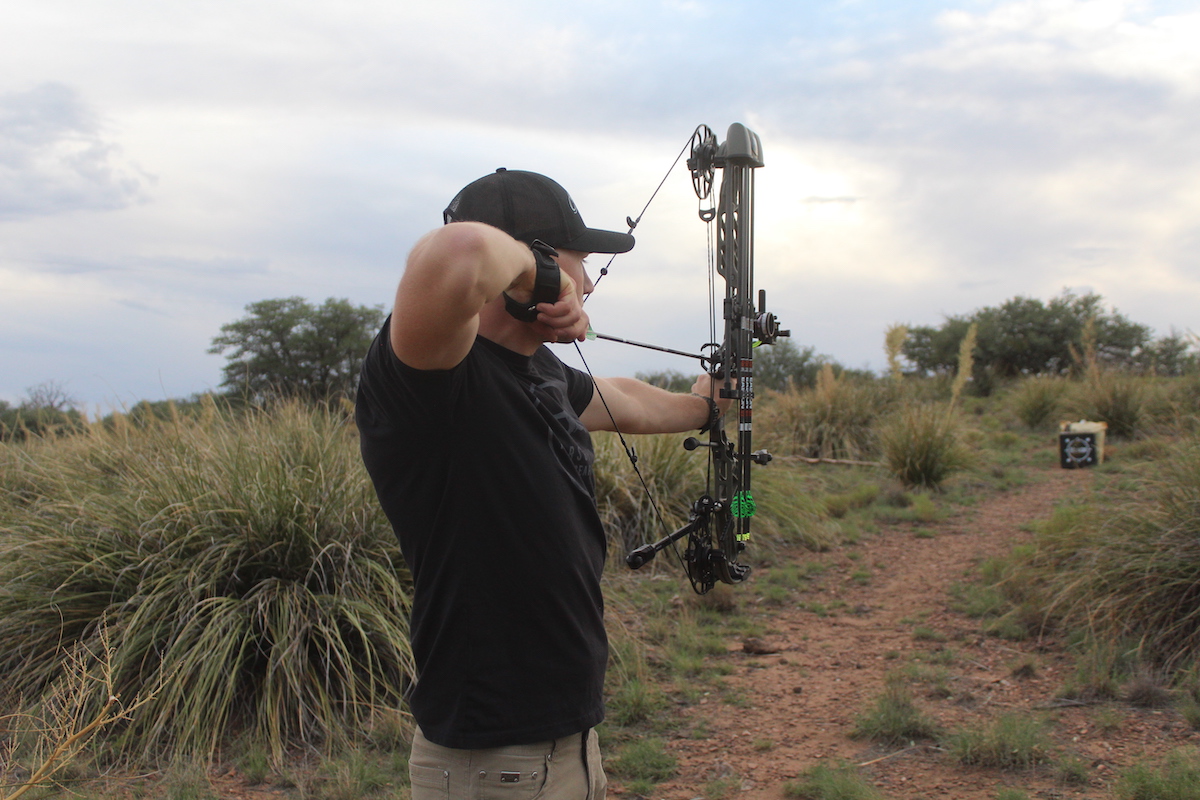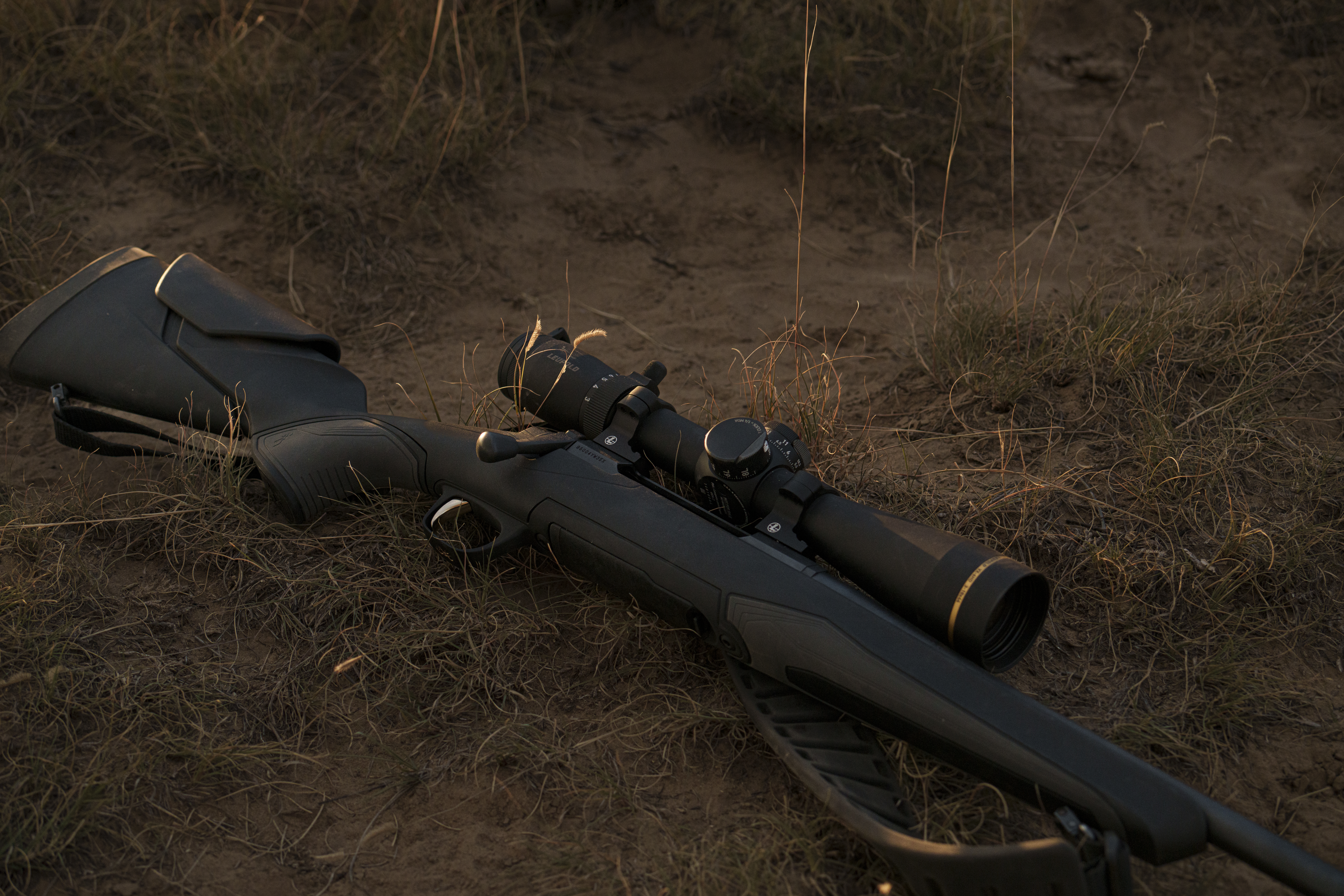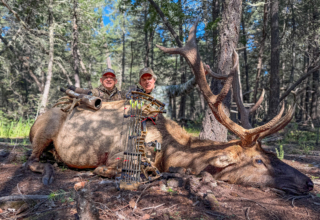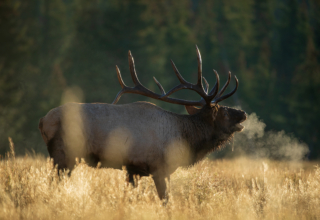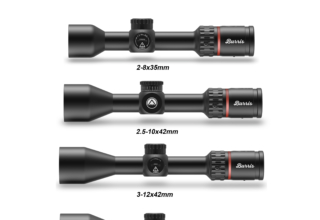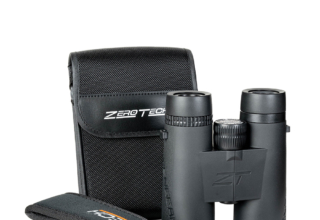Public land elk hunting often means long days filled with little action. Of course, there are exceptions, and the aouthor’s hunt in the Land of Enchantment proved fast and furious.
by Kyle S. Lipke
Elk hunting is often a slow game that requires enduring great effort with little action. Earning one shot opportunity in a week or more of pounding the hills is the best one can hope for. My 2025 New Mexico archery hunt was the complete opposite. On the second morning, I had an intense and nerve-rattling encounter with a huge bull, making for an incredible, action-packed elk hunt.
Prehunt Knowledge
An integral part of finding elk on this hunt was identifying and understanding elk movements in my hunting area before the season began. Through research with onX, I discovered multiple water sources, as well as a couple of timbered ridge lines that promised good cover and feed.
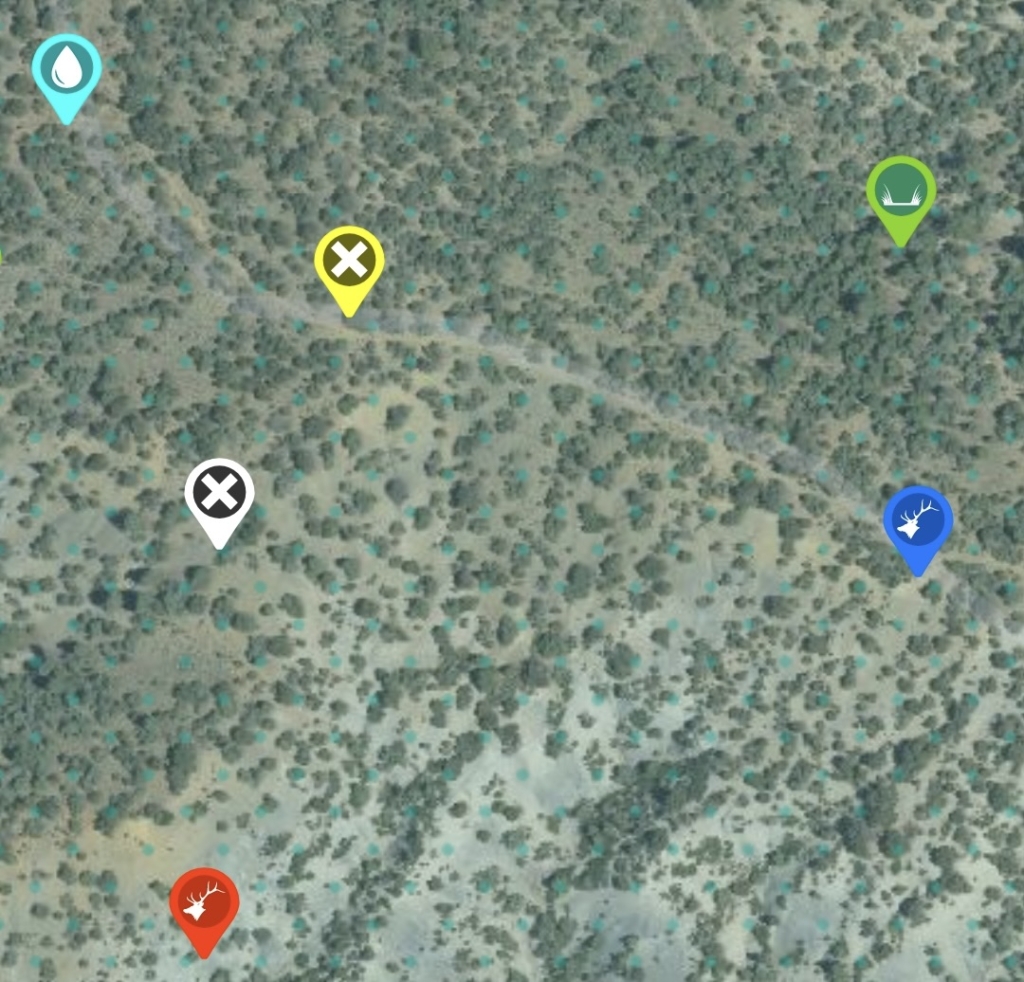
On-the-ground research determined that elk watered in the morning, before feeding towards the prominent ridge where they would bed during the day. In the evening, the elk would move into sage flats to feed again. Elk trails littered with tracks and droppings interwound the hills between the primary water source and their bedding areas. Having this firsthand knowledge before opening day provided a great starting point.
First Light Action
Twenty minutes into the morning, a bugle rang out. Then another. I considered bombing off the ridge to intercept the bulls as I had on opening day, but better judgment told me to hold off. First, the bulls were not super vocal. This would make it difficult to keep tabs on their location without bumping them or slipping past their location.
Second, I knew that it was simply a matter of time before the elk worked their way up to my vicinity. I just needed to be patient.
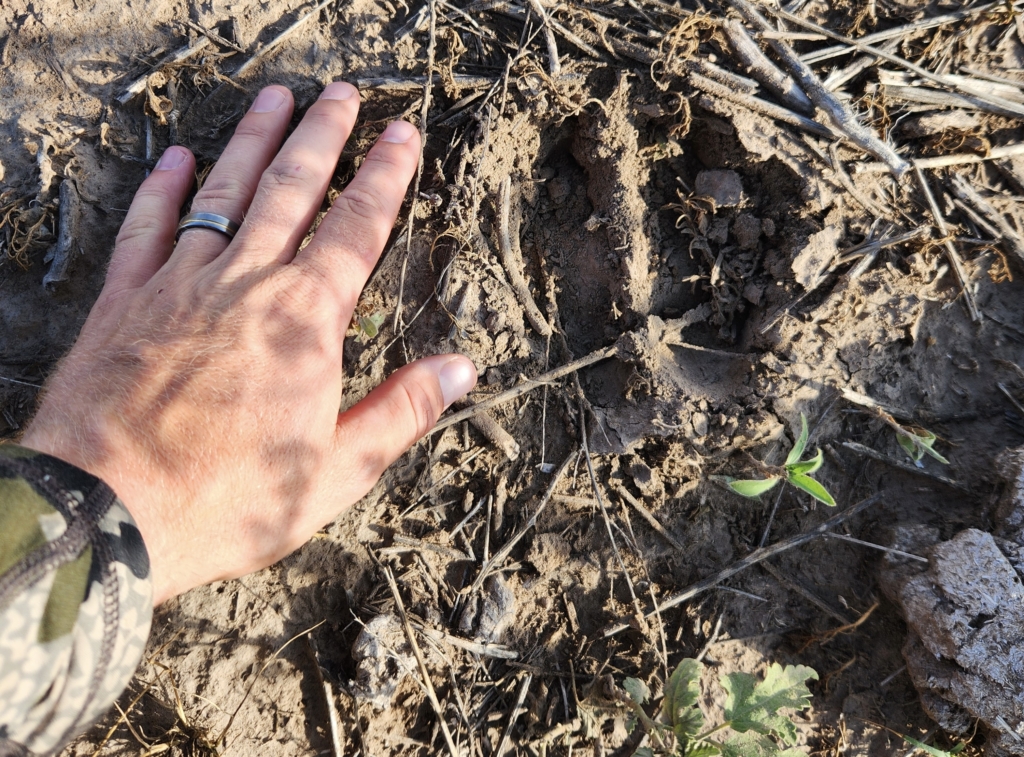
I waited and listened beneath an alligator juniper for the right opportunity to make a move. More bugles confirmed that there were at least three bulls below me. Gazing through my 12x binos, I spotted a handful of cows 500 yards away as they fed through an opening. Then I spotted the herd bull, his long, curvy tines swaying side to side as he started chasing cows around.
The bull infrequently bugled while he courted the herd up the ridge line. Occasionally, I caught views of the cows moving through the oaks, junipers, and ponderosas. Knowing the bull already had a harem, cow calling would likely leave him uninterested. And letting out a bugle held the risk of his gathering his cows and heading out of the area. Rather than try to call this bull in, I determined my best bet was to sneak in silently while he was preoccupied.
Making Moves
Although I lost sight of the bull, I could see the cows maneuvering within a couple of hundred yards of my position. Knowing the bull would be close behind, I maintained my elevation while moving perpendicular to the herd’s travel route. Hastily, I closed the gap by keeping the wind in my face and staying within the shadows. By doing so, I was able to conceal much of my movement.
Twice, this action saved me from getting busted by the bull. I got tunnel vision while heading off the cows when the bull suddenly showed up behind the herd and caught my movement. However, by freezing my position in the shade, the bull quickly became distracted by his browsing harem and moved on. That wouldn’t have been the case if I were caught in direct sunlight.
I had made it within sixty yards of the herd and watched the bull follow a couple of cows over a small hill. Easing forward with an arrow clipped to my bow string, I continued to quickly slip within bow range of the herd, pausing each time I caught sight of a cow, calf, or spike feeding through the oak shrubs.
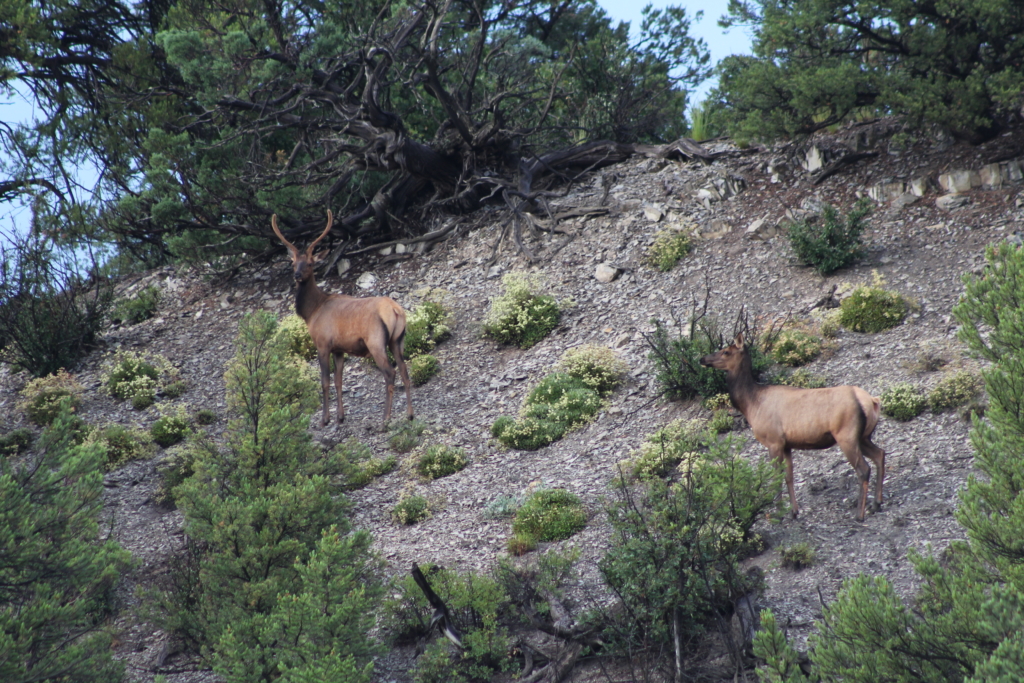
With multiple sets of eyes so close, I watched cautiously as the herd moseyed out of sight. As evidenced by the cracking of branches and rustling of brush, they didn’t go far. I picked up the pace, hustling to eliminate forty yards of distance. Arriving at the scattered imprints left by the herd, I looked down to my left, where, no more than thirty yards in the ravine, there were multiple cows. The wind was still good, and I knew the bull had to be near.
Just then, I heard glunking. If you’re unsure what this is, look it up on YouTube. Bulls vocalize this hollow, tapping sort of sound when they are asserting mating dominance towards a cow. If you can hear this sound, you know you are close. Scrambling through a tunnel of scrub oak and pinion juniper, I hurried to get a shot opportunity.
In my haste to get on the bull, one of the cows in the ravine caught me moving. She trotted up the sandy hillside with angst, and the rest of the cows started following. I forged ahead, hoping I could create a shot opportunity despite my blunder. Just then, a cow and a yearling started running right at me with the bull in hot pursuit. With no spare time to think about my next move, I yanked my bow back while simultaneously preparing for the bull to push the cows into an opening thirty yards ahead.
Whether due to the herd getting antsy or the bull chasing, the cows skirted the opening by swinging farther around a clump of scrub oaks before entering my shooting lane. When the bull cleared the brush, I let out a mew, stopping him broadside. Being at full draw and with no time to do otherwise, I settled the top pin of my Spot Hogg Fast Eddie on the bull’s backstrap and the second pin low in the chest. Then, I released the arrow.
The arrow struck the bull low in the chest cavity. Too low, I feared. The bull bolted out of sight as a multitude of cows exploded out of multiple draws. I quivered with anxiety as I frantically scanned the valley below. I didn’t see the bull join any cows. A promising sign for sure, but I had my doubts.
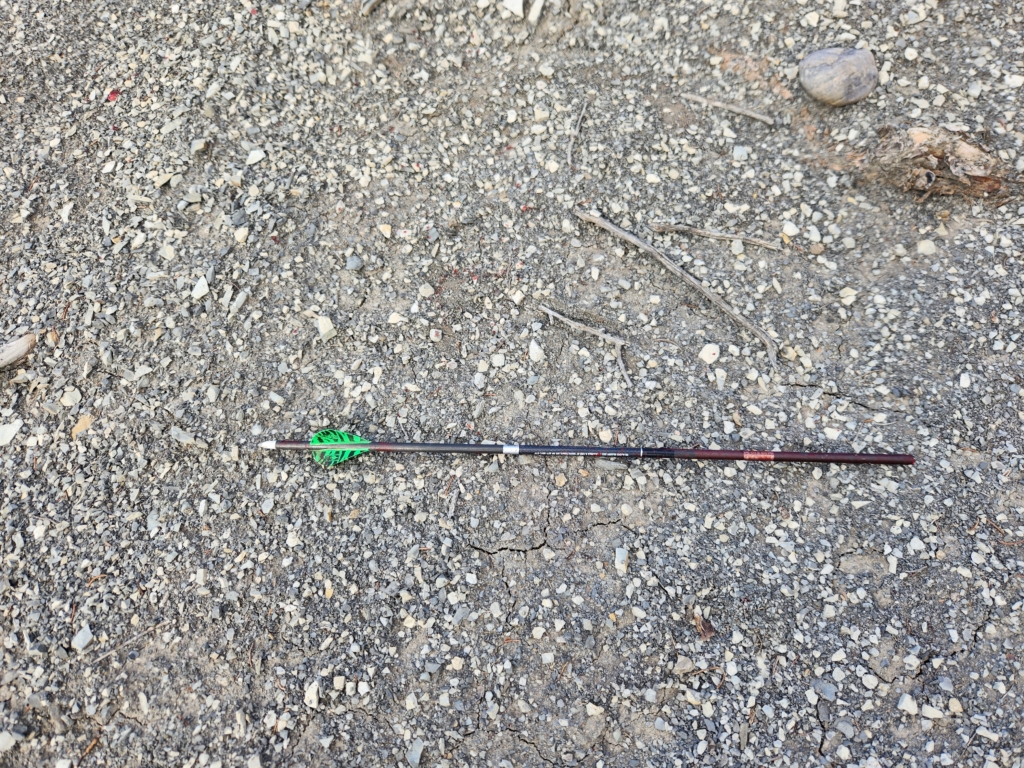
Concerned that I needed to get another arrow in the bull, I didn’t waste more than a few minutes surveying for any sign of the herd master. As the cows dissipated, I hustled to where I last saw the bull, arrow knocked and ready.
As my eyes darted back and forth, I spotted a drizzle of blood. A few yards ahead were another few drops, along with my broken arrow. My worries of little penetration were eliminated as the Easton 6.5mm Match Grade made it more than 8 inches into the bull, and dark red blood covered the shaft. The dark red splotches on the ground were tremendous. Remaining on the trail, my pessimism began transforming into optimism. Then I spotted tan through the center of an oak. Unsure if it was elk hide, I darted ten yards ahead to evaluate. It was! The bull had only gone 80 yards before expiring.
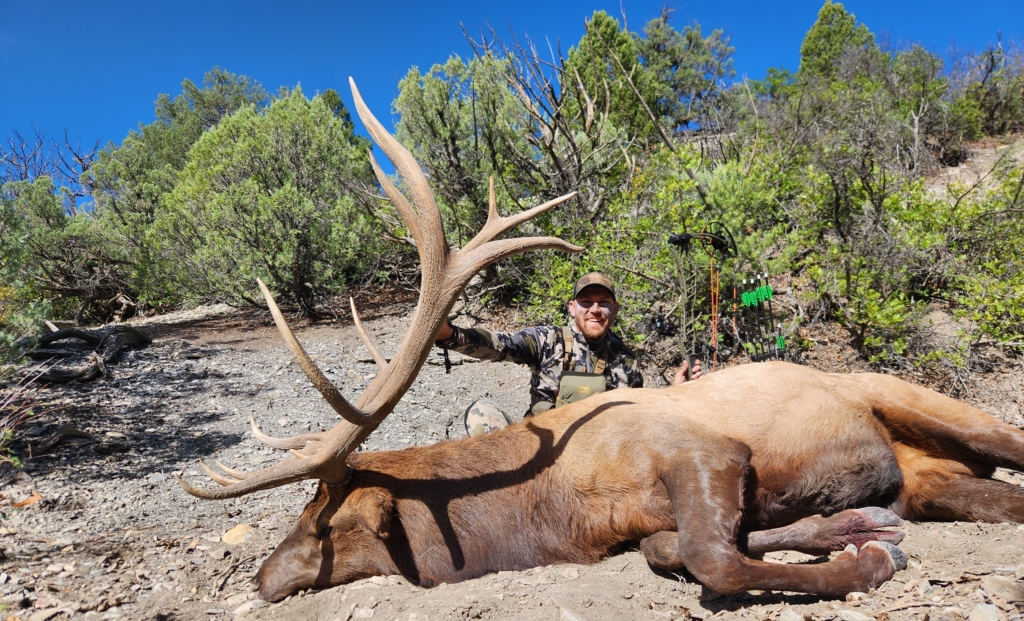
I couldn’t believe it. In a matter of several intense seconds, I filled my tag on a giant herd bull merely two mornings into the hunt. Everything happened so fast that I took a moment to appreciate the bull and soak up the morning’s moment. All I could say was, “Thank you, Jesus!”
Meat Care
With rising temperatures, I knew I had to work quickly to prevent the meat from spoiling. As efficiently as possible, I gutted and skinned the bull. I am often surprised by how many guys will leave the hide on in the field. That hide keeps elk warm in subzero winter snowstorms. Leaving it on is not helping the meat cool down.
With the hide off, I was then able to piece the various cuts of meat off the carcass and stash them under a tree, out of direct sunlight and dirt. Fortunately, my brother and cousin were able to help with the difficult pack out. This helped reduce the time it took to get all the meat to the truck, where we immediately packed it in ice chests. Taking such measures is vital to ensure that quality meat is enjoyed throughout the year.
Final Thoughts
The action on this elk hunt was fast and furious. On just the second day of the hunt, I was able to get smack in the middle of a rut-crazed bull as he pursued his cows, and despite nearly blowing the opportunity, I was fortunate to make a clean, merciful heart shot.
Bowhunting elk often doesn’t pan out with such high-paced action and success, but every time I look at the beams of my majestic bull on the wall, I will recollect the memories of the chase and be truly grateful that it did.
That Packout, Yuck! But the ALPS Elite Frame +3800 Backpack made it Better!
Over the past few seasons, the ALPS Elite Frame +3800 Pack has been my go-to pack. This system was once again along for the adventure on my New Mexico elk hunt. I prefer the pack due to its versatility and functionality.
The Elite pack is made from durable CORDURA fabric and features a sturdy pack frame designed to effectively carry any type of load. Further features I appreciate include waist belt pockets, a bow/rifle strap, and a rain cover.
I run the 3800 pack, but the removable bags are also offered in 700, 1800, and 5800 cubic inch sizes. While hunting, I pack the necessities for a day’s hunt, such as knives, medical supplies, rain gear, a headlamp, snacks, and a water bladder, into the numerous compartmentalized pockets within the bag. The load fits like a jacket, and I have plenty of extra room to take a load of meat if successful.
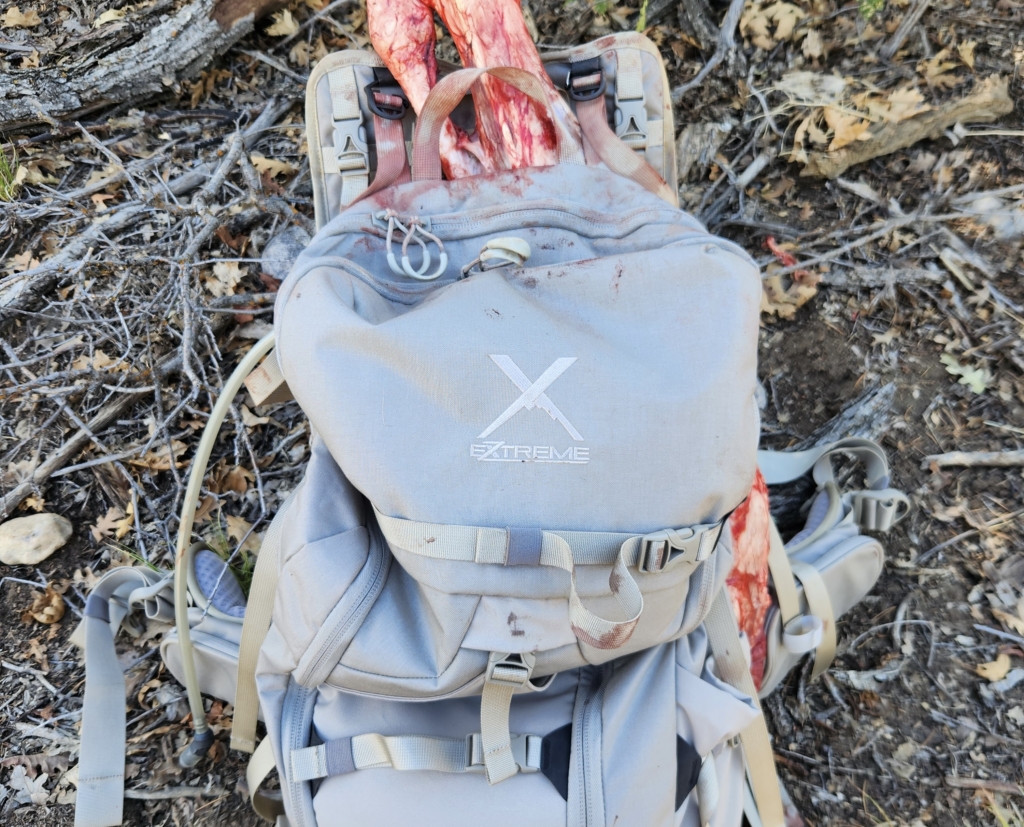
The frame features a designated meat shelf, complete with a multitude of straps to tie in large pieces of meat. I have also had great success stuffing loose pieces of meat into the main bag compartment. On the last trip out, I shoved a shoulder into the meat shelf along with a backstrap. I then filled the sack with a plethora of various roast and hamburger pieces. The loaded pack, once over my shoulders and with the waist and chest straps cinched down, was quite balanced and comfortable. With some assistance, I was then able to load the head and antlers onto the top of the pack and smoothly cruise the final one-mile trek to the truck. I can say firsthand that having such a quality pack makes all the difference between a smooth pack out and a miserable one.


